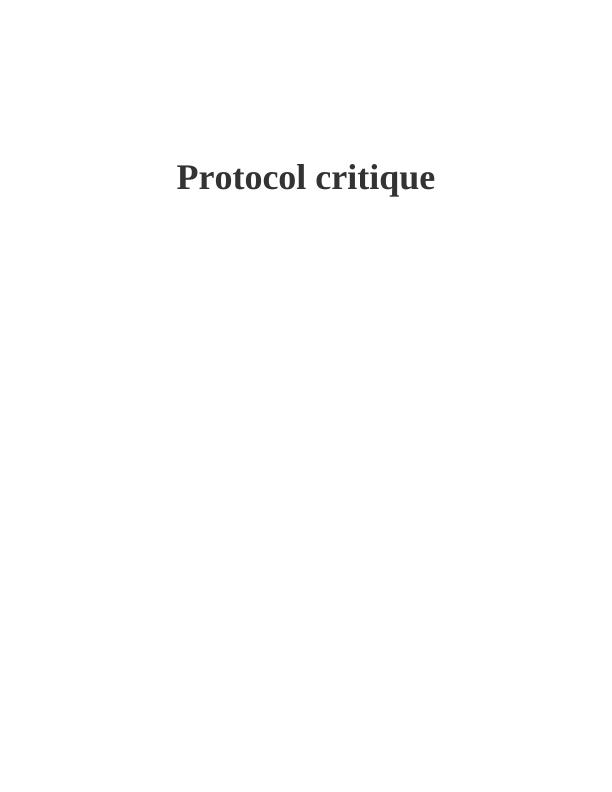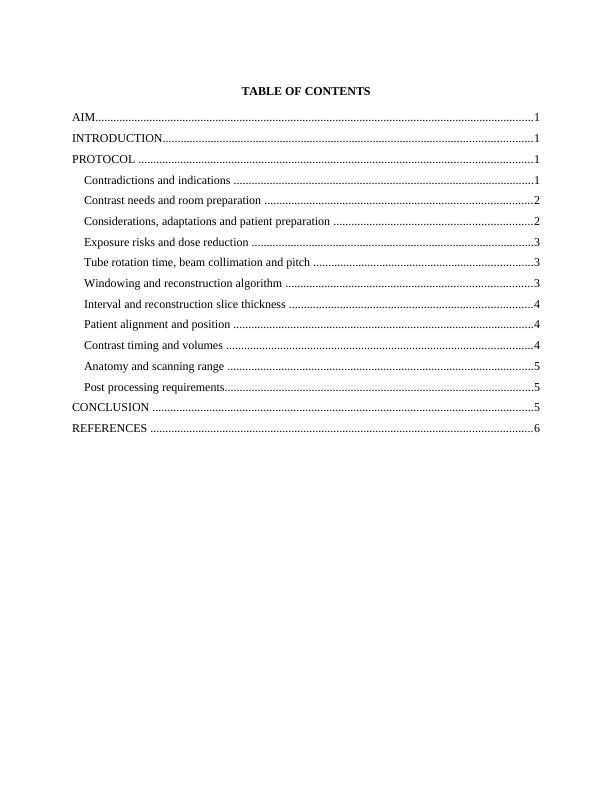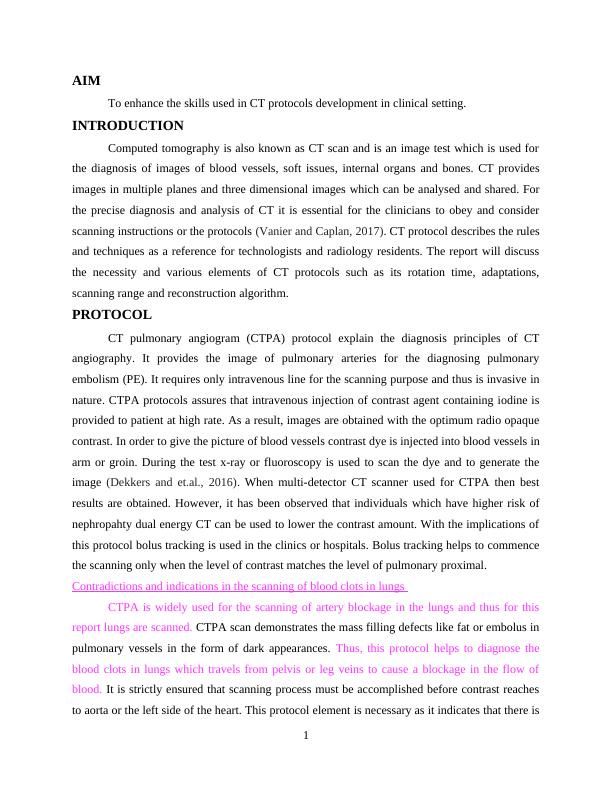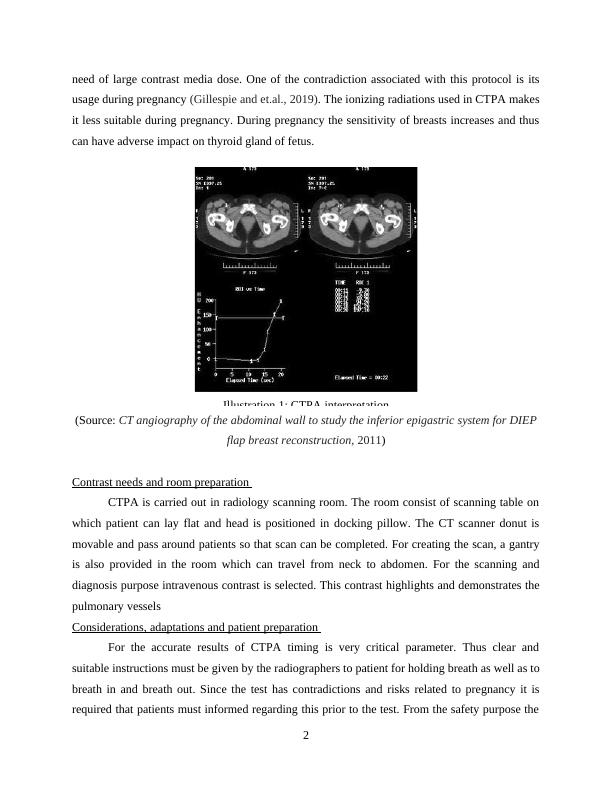CTPA Protocol: Enhancing Skills in CT Protocols Development
Table of Contents Subject Summary 2 Subject Coordinator 2 Subject Coordinator 2 Email 2 Phone 2 Campus 2 Consultation procedures 2 Subject Overview 2 Abstract 2 Learning outcomes 3 Subject content 3 Key subjects 4 Subject Schedule & Delivery 4 Prescribed text 4 Class/tutorial times and location 4 Schedule 5 Learning materials 6 Learning, teaching and support strategies 6 Workplace learning 6 Clinical requirements 6 Recommended student time commitment 6 Assessment Items 7 Essential requirements to pass this subject 7 Items 7 Mid session online test 8 CT Protocols 9 CT Image Interpretation Online Test 13 Final Exam 14 Assessment Information 16 Academic integrity 17 Referencing 17 How to submit your assessment items 17 Online submission process 17 Postal submission process 17 Hand delivered submission process 17 Extensions 18 How to apply for special consideration 18 Penalties for late submission 18 Resubmission 19 Feedback processes 19 Assessment return 19 Charles Sturt University Subject Outline MRS432 201930 W I Version 1 - Published 15 February 2019 Page 1 of 21 Student Feedback & Learning Analytics 19 Evaluation of subjects 19 Changes and actions based on student feedback 19 Learning analytics 19 Services & Support 20 Develop your study skills 20 Library Services 20 CSU Policies & Regulations 20 Subject Outline as a
Added on 2023-02-01
About This Document
CTPA Protocol: Enhancing Skills in CT Protocols Development
Table of Contents Subject Summary 2 Subject Coordinator 2 Subject Coordinator 2 Email 2 Phone 2 Campus 2 Consultation procedures 2 Subject Overview 2 Abstract 2 Learning outcomes 3 Subject content 3 Key subjects 4 Subject Schedule & Delivery 4 Prescribed text 4 Class/tutorial times and location 4 Schedule 5 Learning materials 6 Learning, teaching and support strategies 6 Workplace learning 6 Clinical requirements 6 Recommended student time commitment 6 Assessment Items 7 Essential requirements to pass this subject 7 Items 7 Mid session online test 8 CT Protocols 9 CT Image Interpretation Online Test 13 Final Exam 14 Assessment Information 16 Academic integrity 17 Referencing 17 How to submit your assessment items 17 Online submission process 17 Postal submission process 17 Hand delivered submission process 17 Extensions 18 How to apply for special consideration 18 Penalties for late submission 18 Resubmission 19 Feedback processes 19 Assessment return 19 Charles Sturt University Subject Outline MRS432 201930 W I Version 1 - Published 15 February 2019 Page 1 of 21 Student Feedback & Learning Analytics 19 Evaluation of subjects 19 Changes and actions based on student feedback 19 Learning analytics 19 Services & Support 20 Develop your study skills 20 Library Services 20 CSU Policies & Regulations 20 Subject Outline as a
Added on 2023-02-01
End of preview
Want to access all the pages? Upload your documents or become a member.




